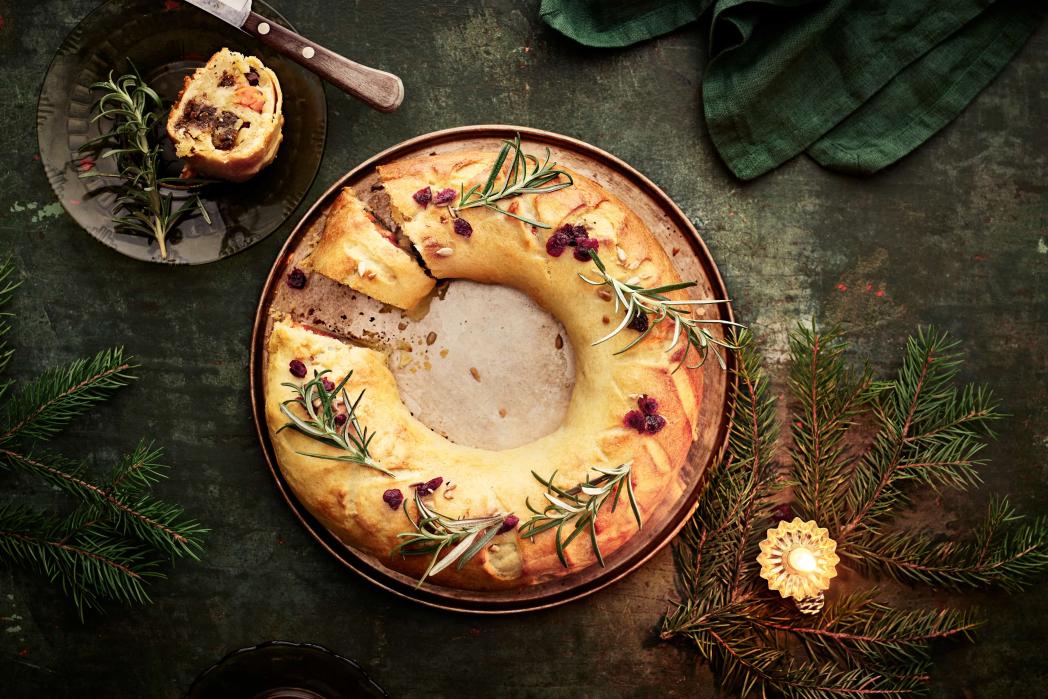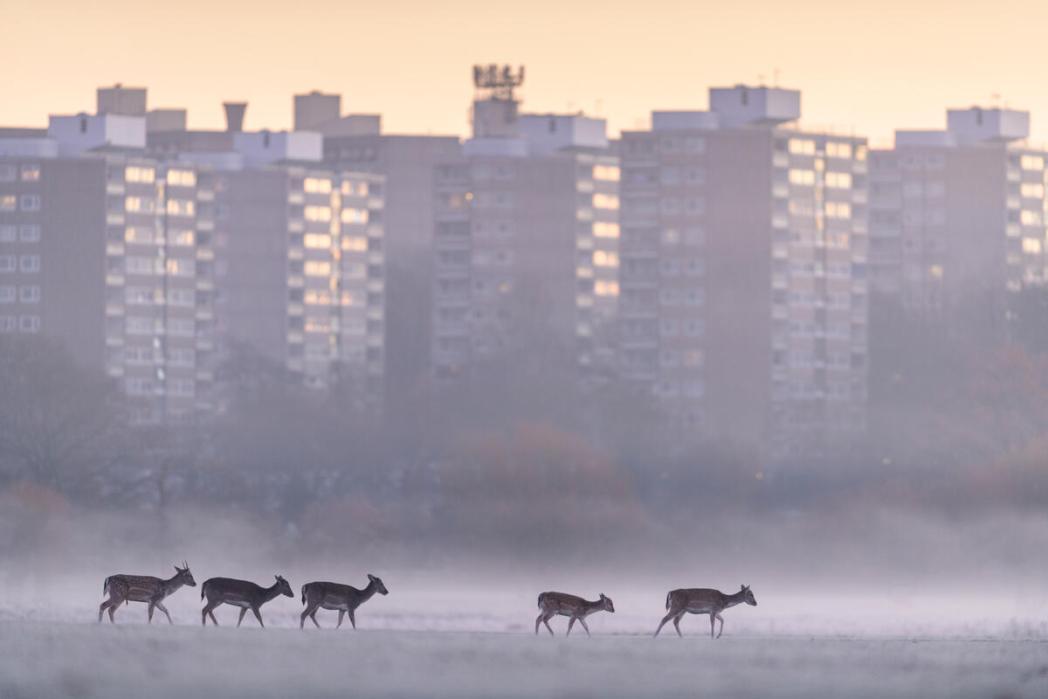The season of goodwill is the perfect time to be part of a more sustainable future. If you’re dreaming of a green Christmas, check out our top tips below.
Tips for Sustainable gifting
1. Quality not quantity
Around half of UK adults receive gifts they don't want at Christmas.[1] When buying gifts, think less but better. Put time into picking a quality item that will both last and be loved. This reduces the chances of gifts going to waste and will ensure that your gift lasts for many years to come. This could even be better for your wallet by purchasing one quality gift, rather than lots of cheaper, disposable or poor-quality items.
2. Gift an experience
Gifting an experience for your loved ones will help to reduce demand for physical resources, avoids filling homes with unwanted presents and can help you to spend quality time together. There are lots of options for different budgets to choose from that will reduce your Christmas footprint. You could buy tickets to an event, book a restaurant for a date, gift a homemade coupon book, donate your time to help babysit, or to visit a local park together for a daily dose of nature, maybe a nice picnic in the summer. Many restaurants and activity locations offer gift vouchers that you can buy for use at a later date. Why not plan a day out to a National Trust or Wildlife Trust location, or even make a homemade meal. It also makes your gift last longer – having something to look forward to later in the year.
3. Check where your gift comes from
If the perfect gift for someone is something new, look at the materials gifts are made from and keep sustainability in mind. Ensure any wood, card, bamboo or paper gifts are made from 100% recycled or Forest Stewardship Council (FSC) certified materials. Avoid single-use plastic items (especially glitter) that can’t be recycled, and look for things like Fairtrade or Organic-certified food and clothing (see tips for food logos at tip 10). You can also support WWF-UK by using our online shop, where all products are sustainably sourced.
4. Shop second-hand
Buying second-hand items helps the planet by reducing the need for new materials, keeping items in use for longer. This helps to reduce emissions used to create new products. Vintage clothes, books, home furnishings, and refurbished technology can all make great sustainable gifts, and they can help make your money go further too. Search the charity shops on your local high street, suggest a ‘swap shop’ with your friends or encourage second hand stalls at community events, schools or workplaces.
5. Avoid excess packaging
Reduce waste even further by buying gifts with little or no packaging. Shopping local instead of online can help with this, especially if you have a local refill shop. If you can’t avoid packaging, look for recycled or recyclable materials. Avoid plastics where possible, and don’t forget your reusable bags to carry all your shopping home! If you’re more inclined to shop online, the WWF-UK shop has a selection of gifts that won’t cost the earth.
6. Get creative with wrapping and cards
What materials do you already have that you can reuse or repurpose? Check out some tape-free wrapping techniques online, such as furoshiki. This is a traditional Japanese method of using cloth to wrap and transport gifts. It makes for beautiful, unique, and reusable packaging. Each year it’s a good idea to get into the habit of saving ribbons, gift bags, and cards to make your own decorative tags and present wrapping for the next year. If you are buying cards and wrapping paper, look for those made from 100% recycled or FSC-certified paper. Avoid plastic ribbons and tape, or foil-backed and glittery wrapping paper. Choose cards that you can recycle (this means no foil or glitter!)
7. Give a gift that lasts for generations
Why not support WWF’s work around the world to restore nature by choosing an animal adoption or one of our memberships? There is a gift for wildlife-lovers of any age, including adoptions for adults or kids, and our ‘Go Wild’ junior membership. By being part of the Go Wild club, kids will learn about wildlife and our work, inspiring them to look after our natural world and protect the animals that call it home.

Tips for a Sustainable Christmas dinner
8. Cut your food waste
Food production is the biggest cause of tropical deforestation as trees are cleared to meet demand for crops such as palm oil that is used all over the world. During the festive season an estimated 42 million plates of food are thrown away in the UK each year[2]. Reducing waste, helps to reduce demand. Cut waste by planning ahead - be realistic about how much food you need, freeze food if you are able to, and use up leftovers. Instead of buying new disposable plastic wrap (clingfilm), use Tupperware or plastic food containers saved after takeaways), aluminium foil, and wax cloth covers to keep leftovers nice and fresh! If you’re visiting friends or family, remember to take some containers with you so you can help share the leftovers and take them home.
9. Try plant-based recipes
Eating more plant-based meals as part of a balanced diet is good for you and the planet. The livestock industry generates 14.5%[3] of all man-made greenhouse gas emissions, and livestock require huge amounts of space, water and feed, all of which contributes to their global footprint. Help to reduce the demand for meat by adding meat free alternatives to your meal plans. If you are hosting a festive gathering, try out some new vegetarian or vegan dishes and help encourage more plant-based meal habits. Here is some inspiration.
10. Know your food logos
Search for sustainability certifications for the food and drink you’re serving this festive season. If products contain palm oil, make sure it’s RSPO-certified which means it has come from sustainably managed palm farms. If you’re serving fish, look for the MSC-certified logo which means that it is sustainably caught wild seafood, and the ASC-certified logo for farmed seafood. For tea, coffee, chocolate, and sugary items, look for Soil Association Organic or Fairtrade certifications. These certifications mean that these items have been grown sustainably and help ensure farmers are paid fairly. To help you, the Impact Score app can show you sustainable products in UK supermarkets.
11. Eat seasonally
Although we need to eat a variety of fruits and vegetables to stay healthy, you can help to reduce the carbon footprint of your festive meals by buying seasonal produce. Focus on traditional UK-grown root vegetables like potatoes, parsnips, carrots and beetroots, and winter vegetables like cabbage, squash, broccoli and cauliflower. For fruit, we can choose UK produce like apples and pears. We don’t have to only eat what’s produced in the UK – instead, we can supplement UK produce with fruits and vegetables that have been shipped to the UK by boat such as clementines, pineapples and pomegranates. By being conscious of what we’re importing we can reduce the emissions from flying food to the UK. This can also help support UK farmers. To find out more, take a look at the work being done by Riverford and use this handy guide to see what fruits and vegetables are in season every week of the year. If you’re using frozen, jarred or canned vegetables and fruit, these are a great way to eat more exotic fruit and veg out of season, with a smaller footprint.

Tips for Sustainable Christmas Decorations
12. Table Decorations
Many Christmas crackers are not recyclable, and the toys inside are often made of plastic that is thrown away after use. Instead, look out for FSC-certified crackers which mean that the packaging is made from sustainably sourced paper and card. Always check what’s inside a cracker to make sure you get something that people will reuse (and ask if you really need them in the first place). Reusable DIY crackers are another great option. Fill them yourself with sustainable options (like fairtrade chocolates) and personalised festive favours. Avoid single-use tablecloths and napkins. Instead, use material versions which have a longer lifecycle than their paper equivalents as you can wash and keep them. Cranberry sauce stains? No problem! Washing on a quick wash setting at lower temperatures will help to reduce your environmental footprint too.
13. Think about your lights
Use LED lights on your Christmas tree, they use less energy, last longer and look just as good! Also, switch off your lights at night - it's safer and won’t cost the earth. Choose lights that have a plug over battery powered, and if you have to choose a battery powered item, make sure you purchase rechargeable batteries (and recharge them in future).
14. Make your own decorations
Try to reuse your decorations but if you fancy a change save yourself some money and reduce your impact by upcycling old decorations. Or make your own using spare material found around the house, like turning old paper into paperchains, or old clothing into decorations. Alternatively, shop second hand or swap with friends.
15. Don’t forget the tree
If buying a plastic Christmas tree, make sure that you’re going to reuse it for at least 10 years (so pick a good one!). Otherwise, it may be better to buy a living tree from a sustainably managed forest. If buying a real tree, make sure it’s FSC-certified. Be clear on how to dispose of your tree once the season is over. If it is potted plant it into a larger pot in your garden (keeping it in a pot stops non-native species impacting local environments). Never plant a Christmas tree in the wild (most are non-native species to the UK and can damage habitats) or dump old trees to decompose in a wild environment (this is fly-tipping and can cause environmental harm). Instead, look for local recycling options for your tree which will turn it into wood chips or compost. Check your local council website for their sustainable collection services. Purchasing a potted tree is a good solution as you can reuse it each year! Why not go a step further and rent a Christmas tree? This is where you care for a tree over the festive period and return it to be replanted for use again the next year.

Tips for a sustainable season
16. Dressing for the party season
This year, try reimagining the clothing that you already own by repurposing items into something new. If you can’t find anything to wear, ask your friends or family if you could borrow something. You never know, they might have a costume kicking around at the back of a cupboard. Alternatively, shop used by visiting second-hand shops on the high-street or use second-hand apps, for your new (but old) Christmas party outfit. Shopping second-hand is much better for the planet than buying new and is a great way to find quirky, unique items like vintage Christmas jumpers. Contribute to the circular economy by donating an old item for someone else to find or try to sell some items.
17. Notice nature on a winter walk
Many of us enjoy spending time with friends and family over the festive period, but we know this time of year can also be hard for many of us. Spending time in nature can give a boost to our mental wellbeing. Try making one of your festive activities a walk around your local park or nature reserve, or connecting with nature indoors and let nature restore you. Winter is a great time to spot all sorts of over-wintering birds. Apps can help identify and discover more about local species, and ones we recommend are Seek, Melin, or iNaturalist. It also helps scientists to track global biodiversity! Explore our guides on how to get a daily dose of nature, boost your mood and restore what matters to you.



 Learn about the effects of climate change
Learn about the effects of climate change
 Here's our green Christmas gift guide
Here's our green Christmas gift guide
 The Big Winter Wander
The Big Winter Wander
 Download WWF's My Footprint app
Download WWF's My Footprint app